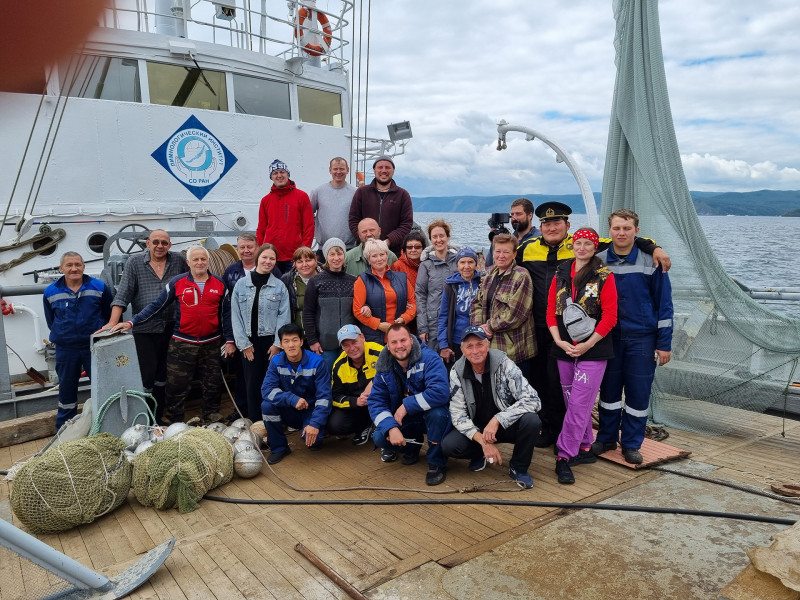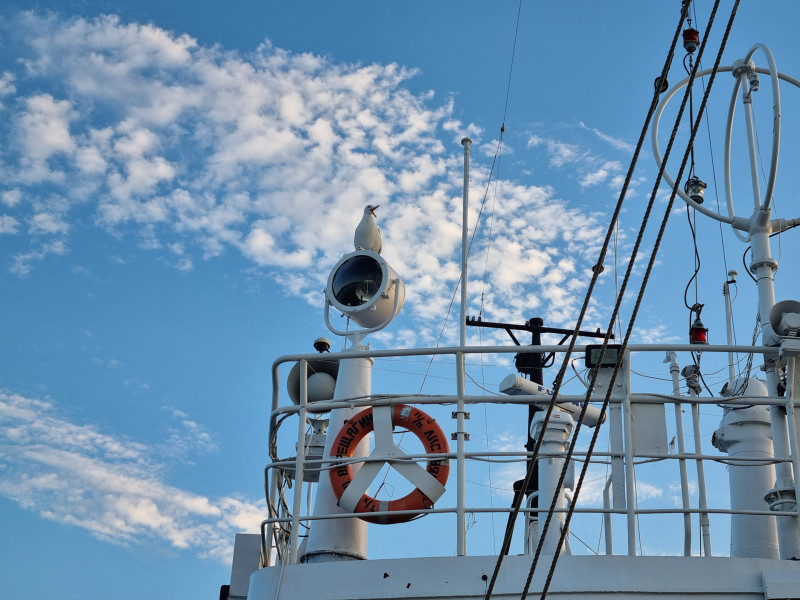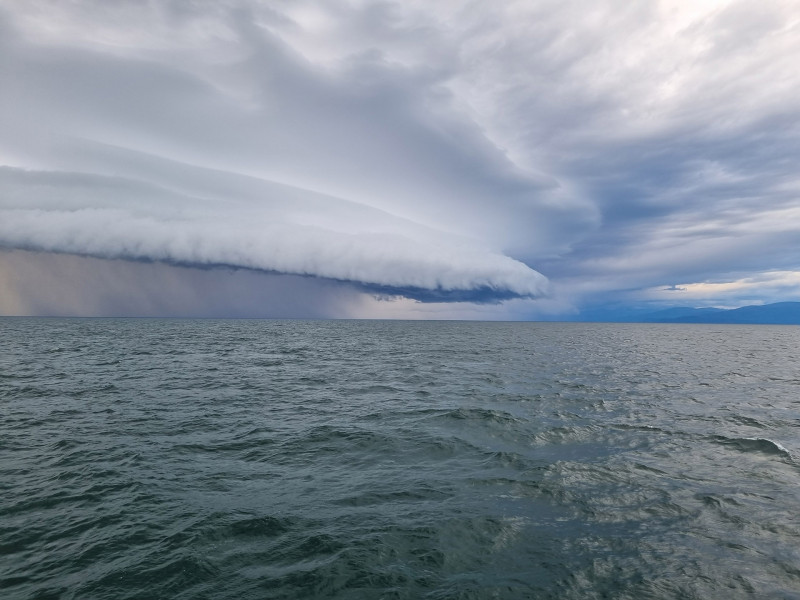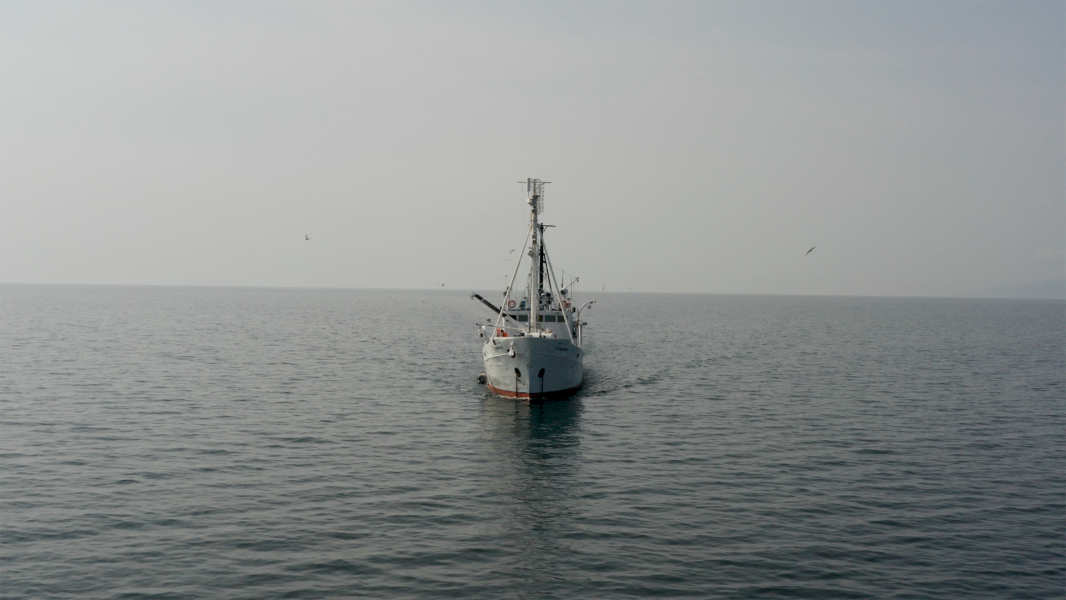Expedition on board the RV “G. Yu. Vereshchagin” from 11 to 21 August 2022 to study the deep-water fauna of Lake Baikal
From 11 to 21 August 2022, the expeditionary works on the RV “G. Yu. Vereshchagin” to study the deep-water fauna of Lake Baikal were carried out within the four State Assignments of LIN SB RAS: “Study of seasonal and long-term transformations of the state of water bodies and watercourses in East Siberia in the context of climate change, geological environment and anthropogenic loads” (project № 0279-2021-0005) (directed by A. Fedotov), “Comprehensive studies of the coastal zone of Lake Baikal: long-term dynamics of communities under the influence of various environmental factors and biodiversity; causes and consequences of negative environmental processes” (project № 0279-2021-0007) (led by O. Timoshkin), “Assessment of environmental and economic aspects of the impact on Lake Baikal from existing and planned anthropogenic factors in the Baikal natural area, rational nature management, water and bio-resource potential of Lake Baikal” (project № 0279-2022-0004) (led by M. Makarov), and “The genetics of the communities of the Baikal organisms: structure of the genefond, strategies of the conservation” (project № 0279-2021-0010) (led by D. Shcherbakov).
Within the expeditionary works 20 deep-water trawlings were conducted, the representative volume of material (samples) was collected on abyssal species of sculpins fish Batrachocottus, Limnocottus, Cottinella and Neocottus inhabiting different depressions of Lake Baikal to obtain additional information on morphological, biological and taxonomic diversity of the species, their phylogeny and evolution.
To develop and test biomarkers of long-term chronic stress and to assess the well-being of Baikal sculpins in the natural environment, to study and compare the morphological diversity of ultrastructure of sensory epithelium of sculpins fish (Cottoidei), to study the modulation of gene expression in fish species living in different conditions of Lake Baikal as well as to search for eco-morphological correlates of functional characteristics of sensory systems in the field conditions, the fixation of different tissues (sensory epithelium, liver, heart, muscles, brain, gill filaments, opercle) of the following species of sculpins fish was carried out: longfin Baikal sculpin Сottocomephorus inermis - 30 individuals (3 age groups), Baikal yellowfin Cottocomephorus alexandrae - 30 individuals (3 age groups), smalleye sculpin Abyssocottus korotneffi - 15 individuals, deepwater sculpin Limnocottus griseus - 15 individuals, short-headed sculpin Cottinella boulengeri - 15 individuals, deepwater sculpin Limnocottus bergianus - 15 individuals, fat sculpin Batrachocottus nikolskii - 7 individuals, big-headed sculpin Batrachocottus multiradiatus - 7 individuals, rough sculpin Asprocottus herzensteini - 15 individuals, deepwater sculpin Limnocottus pallidus - 15 individuals, sculpin Neocottus werestschagini - 15 individuals, sculpinAsprocottus platycephalus - 15 individuals.
The following species for testing of sculpins blood were sampled from trawl catches:
-
Pelagic:
- genus Cottocomephorus (C. grewingkii – 8 individuals, С. inermis – 8, C. alexandrae – 8);
- genus Comephorus (C. baicalensis – 9, C. dybowskii - 8).
-
Benthonic deep-water:
- genus Batrachocottus (B. nikolskii – 3, B. multiradiatus- 3);
- genus Abyssocottus (A. gibbosus – 1, A. korotneffi -6);
- genus Cotinella (C. boulengeri – 6);
- genus Asprocottus (A. herzensteini – 3, A. platycephalus – 13, A. intermedius -3);
- genus Limnocottus (L. bergianus – 4, L. griseus – 8, L. pallidus -4);
- genus Neocottus (N. werestschagini -3).
-
Littoral:
- genus Batrachocottus (B. baicalensis – 3);
- genus Paracottus (P. knerii – 10).
The erythrocyte lysates were prepared to study the hemoglobin structure, blood smears were prepared to study morphology and cytometric parameters of blood cells, imprints of hematopoietic organs (spleen and kidney) – to estimate the immune status of fish, samples of blood cells and hematopoietic tissues were prepared and stained with MitoTracker (fluorescent dye) to detect active mitochondria and assess the energy capabilities of fish organisms. All fish selected for hematological studies were measured, weighed, and photographed.
To assess the vertical distribution of Environmental DNA in the pelagic zone of the lake, water samples were collected and filtered near Peschanaya Bay in the southern basin at depths of 50, 100, 200, 300, 400, and 500 meters. The collection of samples of hydrobionts at the depths "50 meters - surface" and "200 meters - surface" was carried out to check the degree of matching the Environmental DNA diversity. The analysis of the obtained data enables to evaluate the possibilities of using Environmental DNA in Baikal for studying the biodiversity in the pelagic zone of the lake.
Gastropods were found in three zones of the lake in eight trawl searches: the Selenga shallow-water area (depths 123-293 m), Bolshie Olkhonskie Vorota Strait (depths 110-348 m), and Chivyrkuisky Bay (depths 110-792 m). Gastropods belonged to two species Benedictia fragilis and B. maxima, and the number of these species was counted for the first time. The maximum number (70 species per 10,000 m²) was recorded in Chivyrkuisky Bay at the level of 110-158 m. Gastropods and bryozoans were collected from sandy soils at the level of 5-6 meters in Peschanaya Bay. The material has been recorded and will be used for further studies.
To study the species diversity of deep-water amphipods, their genetic structure and phylogeography of this group of hydrobionts, samples of benthic, benthic-pelagic and pelagic amphipods from different depressions of Lake Baikal were collected by bimtral, dredge and divers. Twenty-four stations were worked on in total. According to the preliminary results, the collected samples belong to six species at least.









